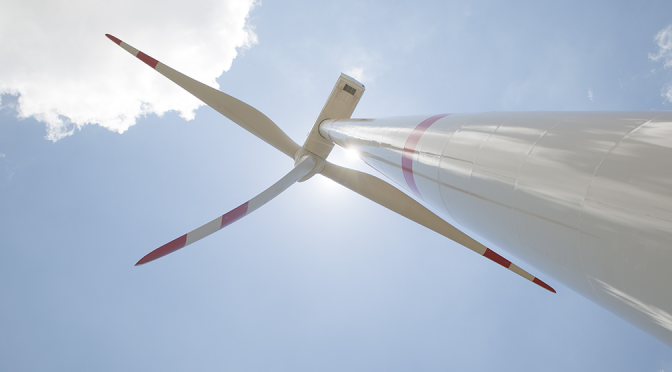This global wind turbine rotor diameter database adds on to GWEC Market Intelligence’s Global Wind Market Development – Supply Side Data released in April 2019, which is part of GWEC Market Intelligence service that provides a series of insights and data-based analysis on the development of the wind industry.
The global wind turbine rotor diameter database consists of the rotor diameter statistics for 2014 and 2018, highlighting the change of global market share of different rotor diameter in the past five years. The key finding from these statistics is that the turbine rotor diameter has been getting increasingly bigger. Turbine with rotor diameter in the size range of 91m-110m was the most installed products in 2014 , accounting for 49.5% global market share. However, the situation has changed and turbine with rotor diameter in the size range of 111m-130m replaced it as the mainstream products, accounting for 57% global market share in 2018. The drivers behind such shift include but not limited to:
- Market-based mechanisms started dominating the global wind market, which generates greater pressure for turbine OEMs to reduce the LCOE by launching new turbines with larger rotors that allow for better capacity factors and an improvement in AEP (Annual Energy Production);
- More onshore wind turbines were installed in low and medium wind speed sites in key markets such as China, Germany and India;
- Increased installation in offshore wind sector where turbine nominal capacity and rotor diameter have increased significantly in the past five years.
Looking into the specific turbine classes, the key trend with regards to the change of rotor diameter remains the same. For example, 2018 saw 6,691 units of wind turbines with a rated capacity of 2.0MW installed globally, making it the most installed product worldwide with 32% of global market share. Comparing the global market share of different rotor diameter in this turbine size class between 2014 and 2018, the following findings are made:
- 0 MW wind turbines with rotor diameter in the range of 91m-100m accounted for 41.9% global market share in 2014, making it the most popular product in this turbine size class, followed by turbine with rotor diameter of 101m-110m at 37.8%;
- 0 MW wind turbines with rotor diameter in the range of 121m-130m became the most popular model in 2018, accounting for 36.2% global market share, followed by product with rotor diameter in the size range of 111m-120m at 33.4%;
- 0 MW wind turbines with the rotor diameter in the range of 91m-100m is designed for the standard IEC II site (7.5-8.5m/s). The same nominal capacity products with rotor diameter in the range of 111m- 130m is for the standard IEC III site (6.0-7.5m/s) or even lower wind speed site;
- The global market share of the 2.0MW wind turbines with rotor diameter in the range of 111m-130m increased by tenfold in just five years, which clearly demonstrates the trend that more wind turbines were installed in the low wind speed site.
China is the key driver behind the trend that the wind turbine rotor size is getting bigger. For example, out of the 6,691 units of 2.0 MW wind turbine installed globally in 2018, nearly 80% is located in China, of which more than half the turbines installed are equipped with the rotor equal or greater than 120m.
In May 2019, Chinese National Development and Reform Commission (NDRC) released a new policy, which presents a clear roadmap towards the subsidy-free onshore wind. Starting from 1 January 2021, all newly approved onshore wind projects shall reach the grid parity (zero- subsidy). To meet the deadline, 14 Chinese OEMs launched more than 30 new turbine models at China Wind Power 2019, an event co-organised by GWEC on 21-24 October 2019, in order to further reduce the cost of energy. Out of the 30+ new models, the small rotor diameter is 136m. Following such a trend in the world’s largest wind market, GWEC Market Intelligence believes that turbines with the rotor diameter in the size rage of 131m-140m are likely to become the mainstream product globally by 2020.
Access this global wind turbine rotor diameter database along with other global data and insights on the wind industry exclusively on GWEC’s Market Intelligence Platform.
About the Global Wind Market Development – Supply Side Data
The Global Wind Market Development – Supply Side Data 2018 that represents a detailed account of wind turbines installed across the global from all active suppliers over the past year authored by GWEC’s own team of wind energy experts and collaboration with regional and national associations as well as corporate members. The final report that includes more than 30 tables and figures charting the evolution of global wind power markets on the supply side is the sister report of GWEC’s Global Wind Report 2018 that covers the global wind market status and outlook from the demand side. Combing the two reports could provide a powerful tool for our members to understand the global wind market development from both demand and supply sides.


